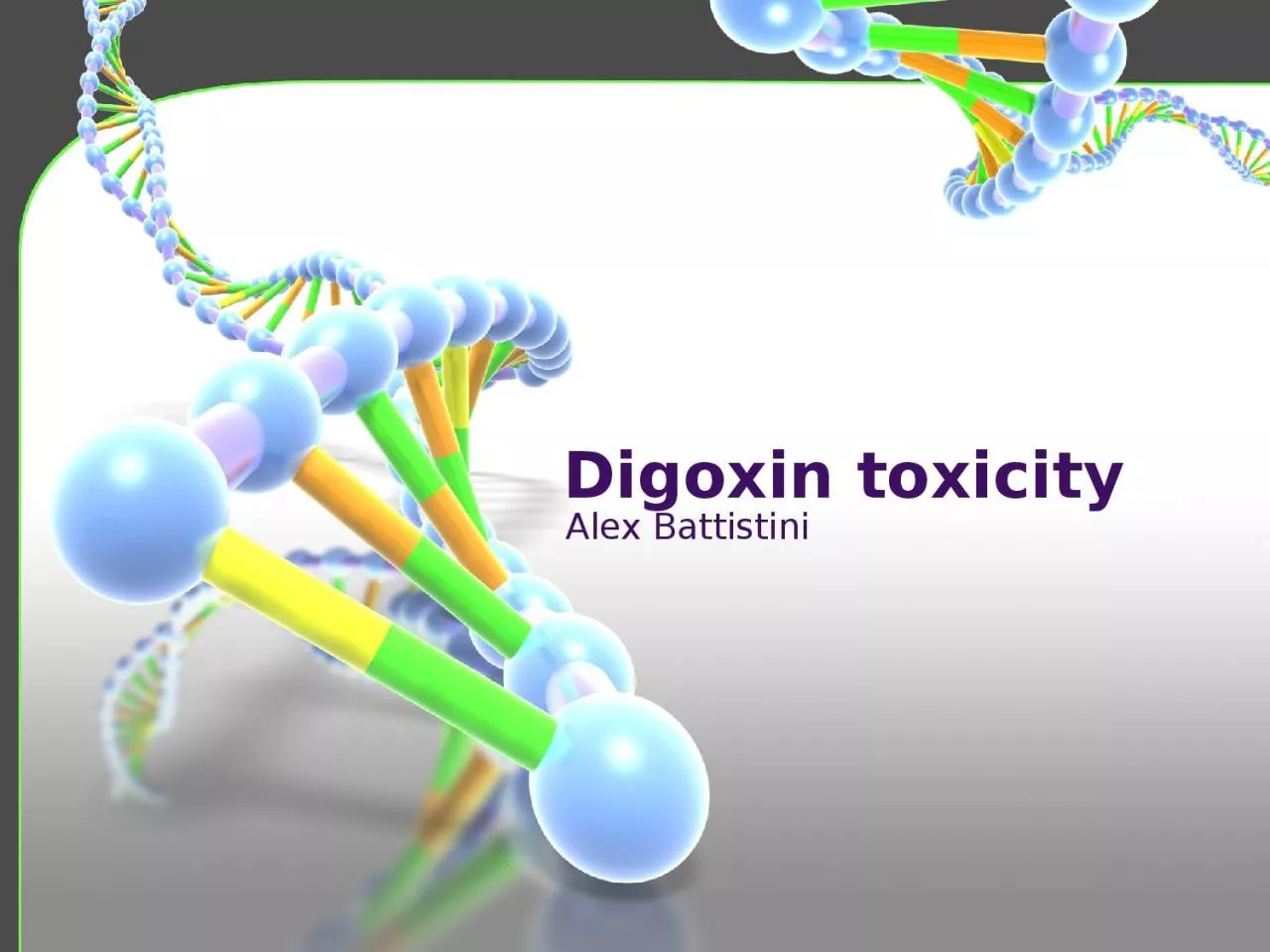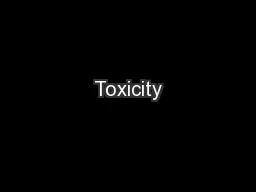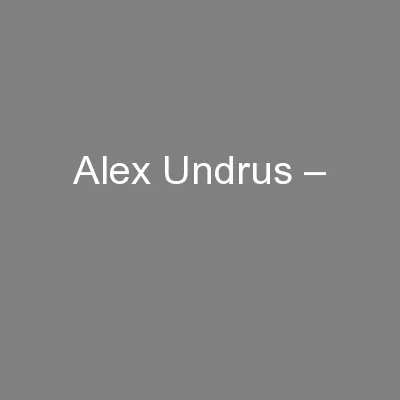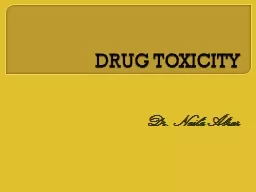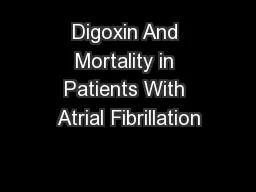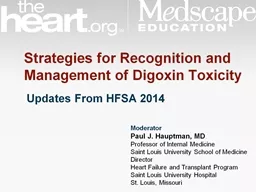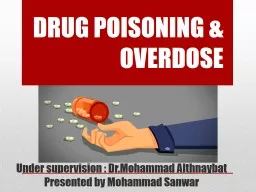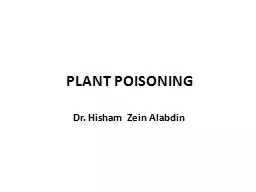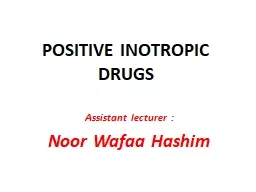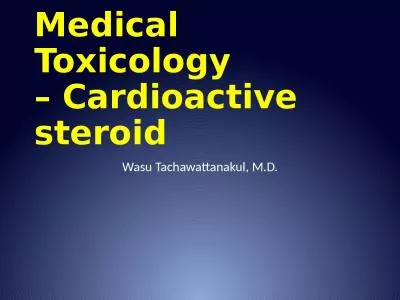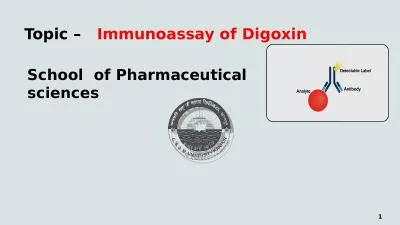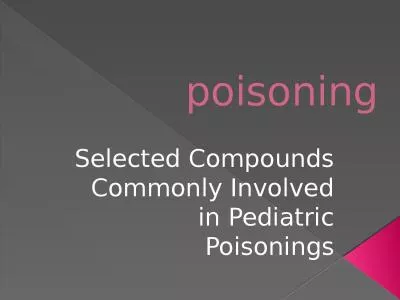PPT-Digoxin toxicity Alex Battistini
Author : esther | Published Date : 2024-02-09
Pharmacology of digoxin Clinical Uses Overview Introduction Toxicity and management 1 2 3 4 Digitalis Cardiac glycoside that occurs naturally in plants Its medical
Presentation Embed Code
Download Presentation
Download Presentation The PPT/PDF document "Digoxin toxicity Alex Battistini" is the property of its rightful owner. Permission is granted to download and print the materials on this website for personal, non-commercial use only, and to display it on your personal computer provided you do not modify the materials and that you retain all copyright notices contained in the materials. By downloading content from our website, you accept the terms of this agreement.
Digoxin toxicity Alex Battistini: Transcript
Download Rules Of Document
"Digoxin toxicity Alex Battistini"The content belongs to its owner. You may download and print it for personal use, without modification, and keep all copyright notices. By downloading, you agree to these terms.
Related Documents

